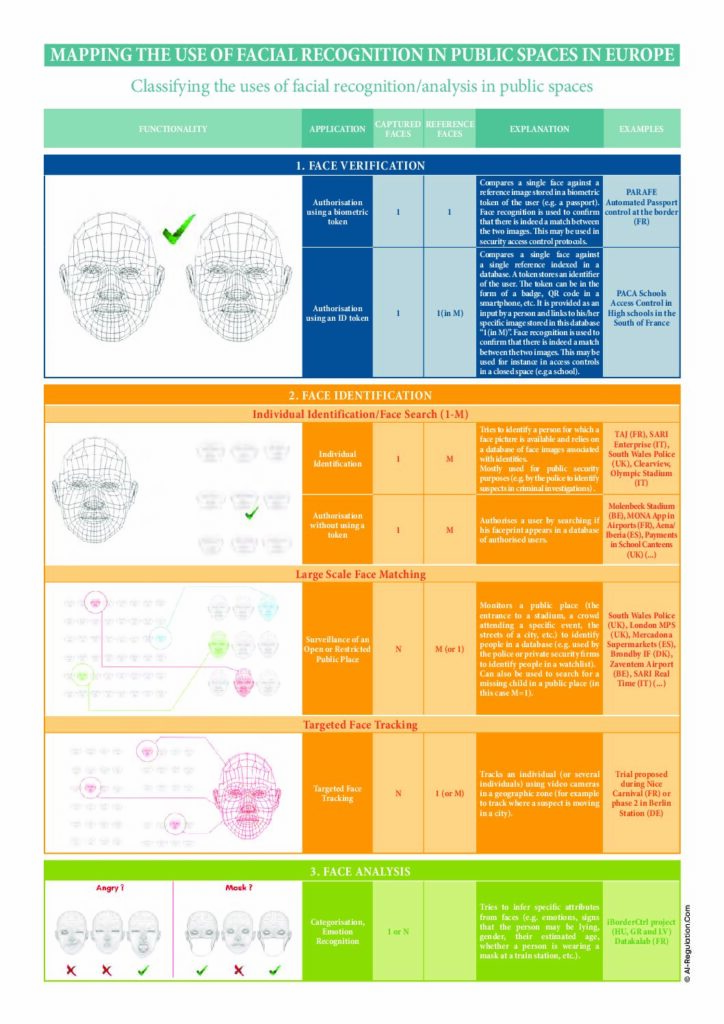By Theodore Christakis (project leader), Karine Bannelier, Claude Castelluccia, Daniel Le Métayer.
The French DPA, CNIL, stressed that “the current debate on facial recognition is sometimes distorted by a poor grasp of this technology and how it works”. This 2nd of 6 Reports of our MAPFRE series provides a path to understanding with a classification table presenting in the most accessible way the different facial processing functionalities and applications used in public spaces.

In Part 1 of our “MAPping the use of Facial Recognition in public spaces in Europe” (MAPFRE) project we explained in detail what “facial recognition” means, addressed the issues surrounding definitions, presented the political landscape and set out the exact material and geographical scope of the study. Furthermore, we explained how our study covers all the ways in which face processing systems are used in public spaces in Europe, whether the data involved are “biometric data” or, to use the new term, are “biometrics-based data”. Drawing on the draft EU AI Regulation, we also precisely defined what we mean by the term “public spaces” and presented three subcategories, that we have used for our study: “open spaces”; “restricted spaces”; “closed spaces”.
As noted by the French Data Protection Authority, CNIL, “the current debate on facial recognition is sometimes distorted by a poor grasp of this technology and how it exactly works”. The specific objective of the present paper is to present how facial recognition and facial analysis work.
We have also endeavoured to produce a “Classification Table” detailing how facial recognition/analysis is used in public spaces. This classification table tries to present in the most accurate and accessible way the different facial processing functionalities and applications used in public spaces, which encompass the various forms of both “face recognition” and “face analysis”.
We hope that this classification table, together with the illustrations, explanations and numerous examples that are included, which are based on our “25 selected case studies”, will serve as a useful tool in preventing the various uses of facial recognition being conflated, and will bring further nuance and clarity to the public debate.

To download the full report, please click here.
The first report entitled “Mapping the Use of Facial Recognition in Public Spaces in Europe – Part 1: A Quest For Clarity: Unpicking The “Catch-All” Term”, is available here.
The third report entitled “Mapping the Use of Facial Recognition in Public Spaces in Europe – Part 3: Facial Recognition for Authorisation Purposes” will be published soon on our website.

